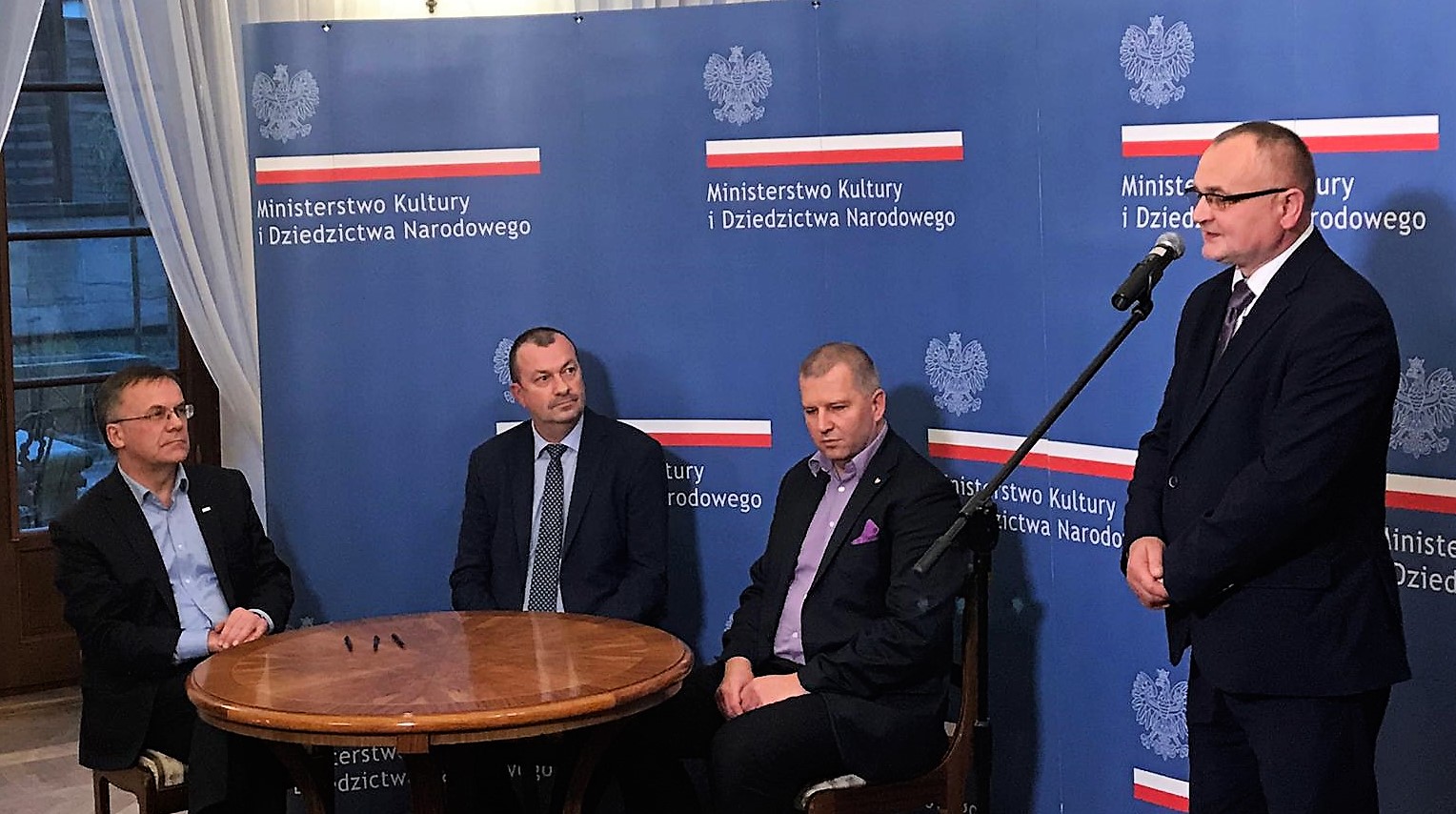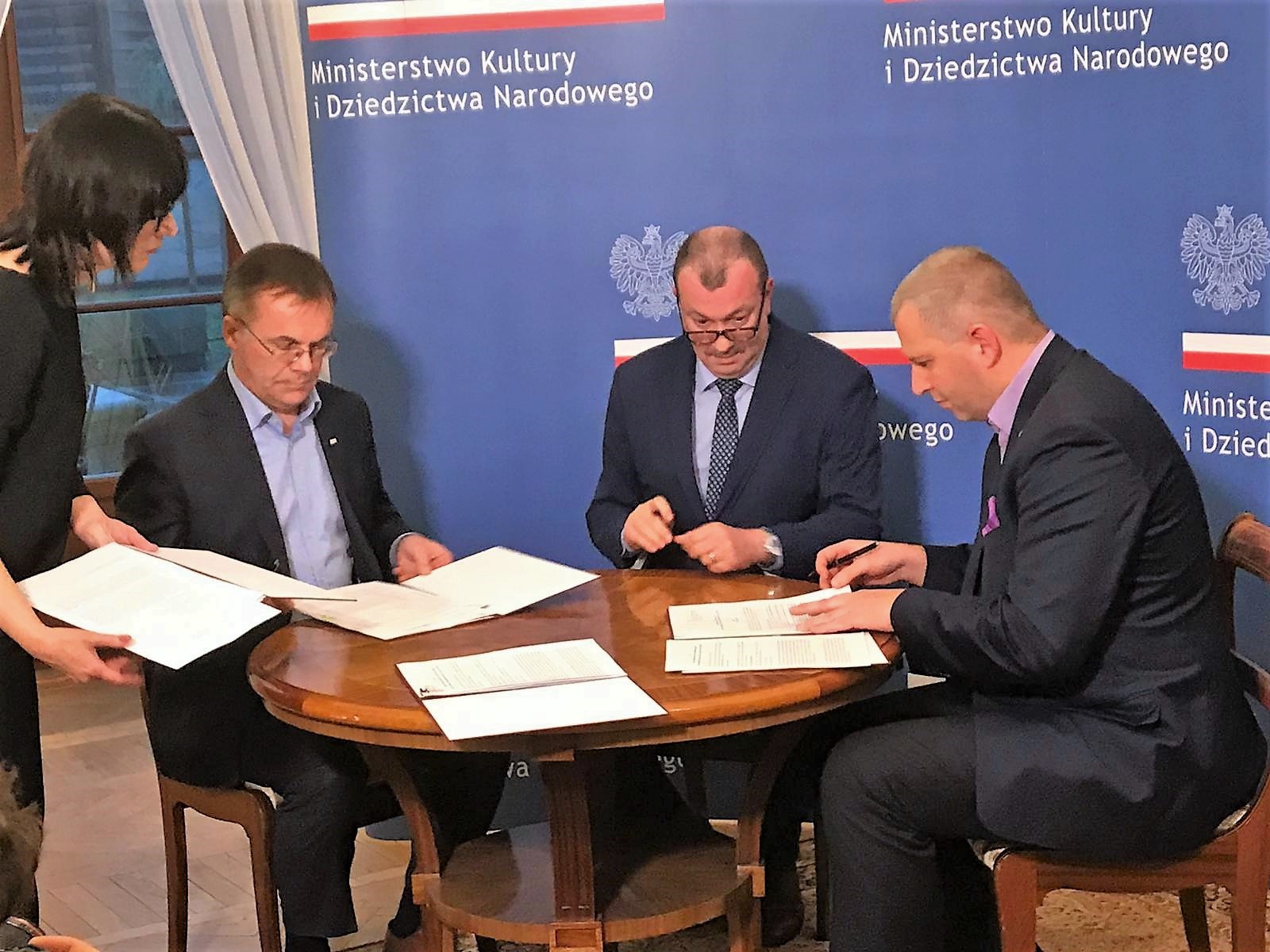Treblinka Museum under joint local and national management as the Ministry of Culture and National Heritage steps in.
Treblinka Museum. From now on, the German-Nazi extermination and labour camp (1941-1944) will now be managed jointly by the Ministry of Culture and National Heritage and the Masovian Province regional self-government. Today we witnessed the signing of an agreement on this matter by and between the secretary of state in the Ministry of Culture and National Heritage Jarosław Sellin, deputy marshal (speaker of the house) of the Masovian Province Wiesław Raboszuk and the director of the Culture, Promotion and Tourism Department of the Marshal’s Office of the Mazowieckie Voivodeship Paweł Cukrowski. Patronage of the state authorities will enable the museum to achieve the status compatible with it being a “monument of the Holocaust,” as defined under the Act on the Protection of the Sites of Former Nazi Death Camps.

The agreement signing ceremony was also attended by the director of the Treblinka Museum Edward Kopówka, the director of the Warsaw Ghetto Museum Albert Stankowski, the director of the Jewish Historical Institute Paweł Śpiewak, Gideon Nissenbaum of the Nissenbaum Family Foundation and the director of the Minister of Culture and National Heritage Political Cabinet Michał Góras.
“Today’s ceremony in which we have signed an agreement on joint operation of a cultural institution under the name of “The Treblinka Museum. The German-Nazi Extermination and Labour Camp (1941-1944)” crowns the longstanding efforts of the Marshal of the Masovian Voivodeship, the Marshal’s Office and ourselves to honourably protect and fittingly commemorate the Treblinka memorial site, and the prisoners and the victims of both the camps – the death camp and the forced-labour camp – and to raise general awareness of the place. This marks another step in the implementation of the historical politics of the Polish State,” said deputy minister Sellin.
The deputy head of the ministry of culture stressed that the proportions of the carnage wrought by Nazi Germany in Treblinka is beyond imaginable.
“When referring to the Second World War, we are used to operating in large numbers, which consequently fail to quicken our imagination. In the case of the two Treblinka camps, we are challenged to think about nearly one million victims! This is equivalent to total population of Warsaw in the year 1921! I believe this allows us to comprehend the destructive effects of the Holocaust and of the Nazi war crimes,” he emphasised further.

Deputy minister Sellin thanked all those engaged in the process that led to establishment of the museum as an independent cultural institution co-ordinated by state and local-government authorities, a process initiated through a Letter of Intent signed in July 2017.
“This is a huge opportunity [that we have created] for long-term development of this institution, which has my sincerest wishes of many successes in the implementation of its important mission,” the minister added in closing.

